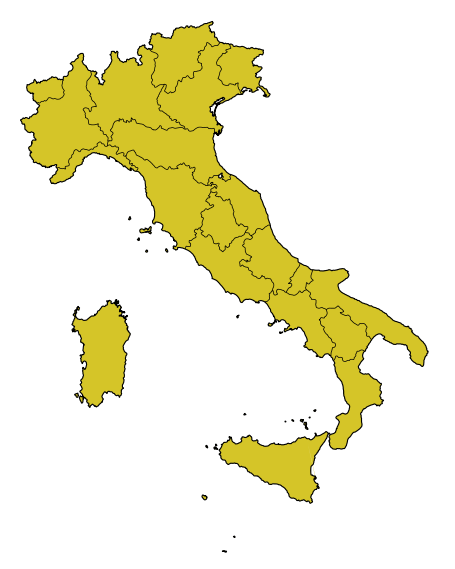Railway stations in Italy
Most railway stations in Italy are maintained and operated by RFI, a subsidiary of Ferrovie dello Stato Group. A minor part of them are operated by private and regional companies, conceded by the state.[1][2]
Classification
RFI classifies stations into Platinum, Gold, Silver and Bronze categories.[3]
Platinum
Major stations with over 6,000 passengers per day. As major interchanges they will have many departures and arrivals daily, and will be served by high speed/long distance services. They are the principal stations for the Italian cities they serve. They have the highest commercial potential (both fares and revenue from on-site merchants). 16 stations are classified as platinum:[4]
Gold
Gold stations have high traffic levels. These include major urban inter-changes and stations serving large towns. They have a lower commercial potential.
Silver
This class includes all other small to medium-sized stations served by metropolitan and regional services. Some of these may be served by long distance services.
Bronze
Small stations with low passenger numbers. This includes minor stations served by regional services.
Stations by region
Lists of railway stations in Italy by region.[5]

See also
- Centostazioni
- Ferrovie dello Stato Italiane
- Grandi Stazioni
- Rail transport in Italy
- List of railway stations
References
- ↑ (Italian) Article with a list of some Italian private railways
- ↑ (Italian) See also: it:Ferrovie in concessione
- ↑ "La classificazione delle stazioni ferroviarie" (in Italian). RFI. Retrieved 17 February 2011.
- ↑ Tratto da rfi.it URL consultato il 10-02-2008.
- ↑ "Le stazioni oggi REGIONE per REGIONE". 2009 Network Statement. RFI. Retrieved 25 July 2010.
External links
![]() Media related to Railway stations in Italy at Wikimedia Commons
Media related to Railway stations in Italy at Wikimedia Commons